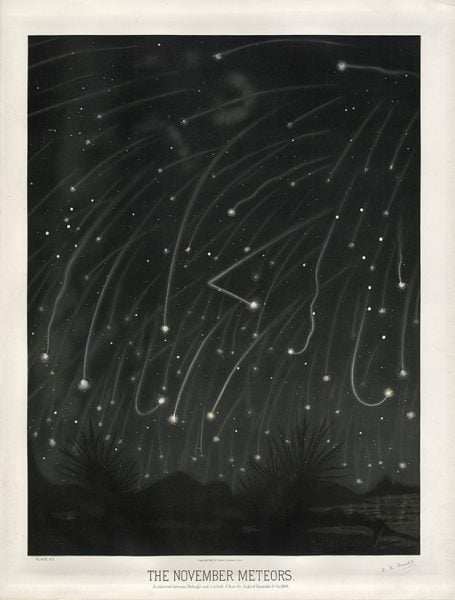
Stargazers, Get Ready for the Leonids Meteor Shower!
Attention, celestial enthusiasts! Mark your calendars for November 16, 17, and 18, as the night sky is set to dazzle with the breathtaking Leonids Meteor Shower. As the Earth passes through a trail of debris from the comet Tempel-Tuttle, prepare for a celestial show of shooting stars. In this blog post, we’ll explore the wonder of the Leonids, offer tips for optimal viewing, and introduce a unique way to commemorate this celestial event.
The Science Behind the Leonids Meteor Shower
Every November, our planet intersects with the remnants of the comet Tempel-Tuttle, resulting in the spectacular Leonids Meteor Shower. These shooting stars, created as particles from the debris burn up in Earth’s atmosphere, take their name from the constellation Leo, as they appear to radiate from this celestial lion.
Prime Viewing Hours: Dark Skies and Shooting Stars
For avid stargazers, the best hours to witness this celestial extravaganza are during the darkest hours preceding dawn. Set your alarm, and venture outside after midnight for an unobstructed view. This year’s shower is particularly special as it aligns with the new moon, minimizing light pollution and allowing the shooting stars to truly steal the spotlight. Anticipate up to 15 meteors per hour, making this an event you won’t want to miss.
Tips for Meteor Shower Enthusiasts
- Choose a Dark Location: To fully immerse yourself in the Leonids Meteor Shower, find a location away from city lights. The darker the skies, the more vivid the shooting stars will appear.
- Bring a Blanket and Snacks: Make your meteor-watching experience comfortable by bringing a blanket or reclining chair. Pack some snacks to enhance the celestial picnic atmosphere.
- Find the Leo constellation in the sky: Identify constellations and track the meteor shower’s radiant point with the help of of a star chart or a star-tracking app. These handy tools enhance your understanding of the cosmic display.
- Enjoy the magic of the moment. You may not be able to “catch a falling star”, but you can wish upon a star and remember this night under the stars in a special way.
Imagine immortalizing this celestial event by naming a star after yourself or a loved one. Starregistry.com offers a unique opportunity to buy a star package in someone’s name, creating a timeless connection to the beauty of the Leonids Meteor Shower. As a 50th birthday gift or a special occasion surprise, naming a star adds a personal touch to a celestial experience.
Why Name a Star?
Timeless Keepsake: A named star serves as a lasting memento, capturing the essence of a meaningful experience, such as the Leonids Meteor Shower, an anniversary, or a magical holiday.
Unique Gift: For a milestone birthday gift or any special occasion, the act of naming a star is a unique and thoughtful gesture that goes beyond traditional presents.
Educational Experience: Naming a star encourages an interest in astronomy and provides an educational opportunity to learn more about the cosmos.
Conclusion: A Cosmic Celebration
As you marvel at the Leonids Meteor Shower this November, consider taking your celestial experience to new heights by naming a star with starregistry.com. Whether it’s a personal indulgence or a 50th birthday gift, this unique gesture adds an extra layer of magic to an already enchanting event. Catch a falling star and make it yours forever!
Image: The November meteors. As observed between midnight and 5 o’clock A.M. on the night of November 13-14 1868. (Plate XII from The Trouvelot Astronomical Drawings 1881-1882)
